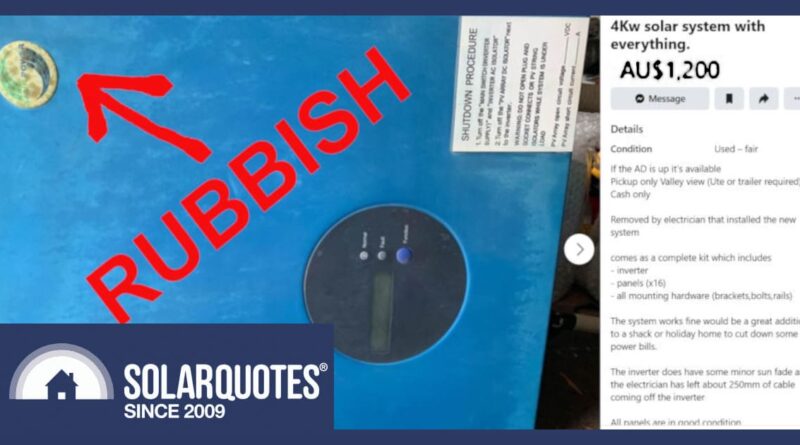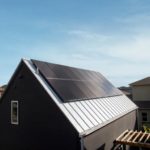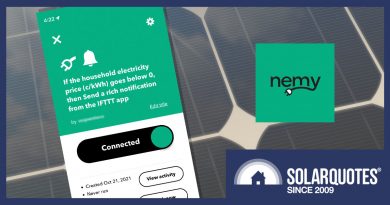Second Hand Solar – Don’t Waste Everyone’s Time
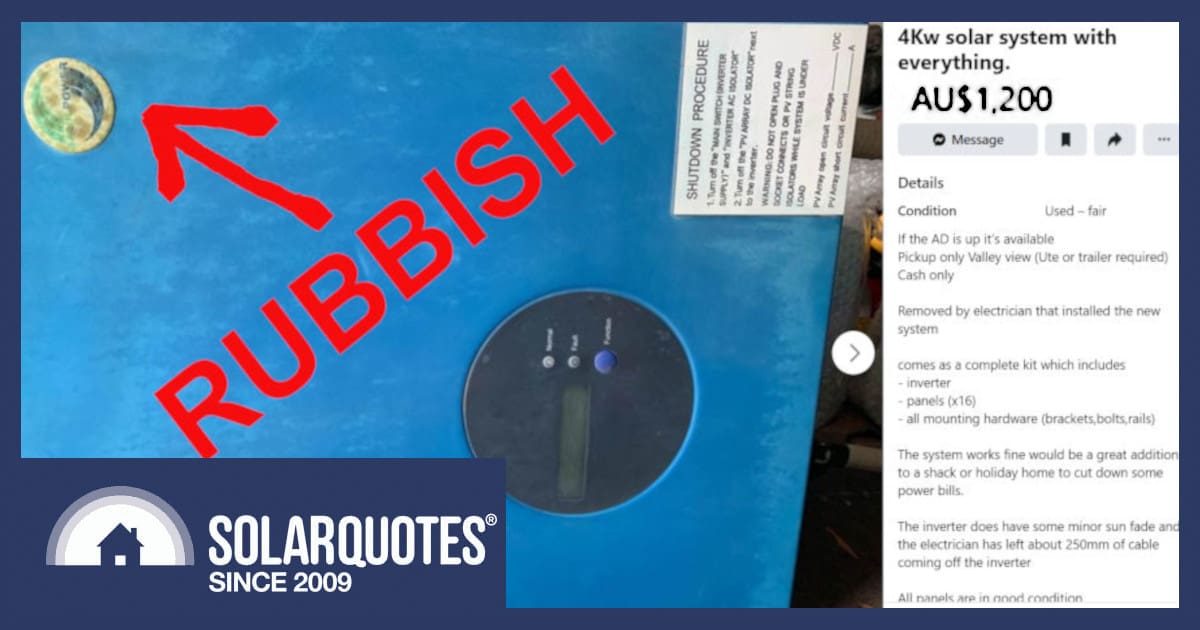
This would NOT be a good addition to your shack; in fact, Samil inverters were no good when they were new.
As solar power systems age and power prices climb, an upswing in used solar is hitting the secondhand market. But please don’t think these bargains are something you can screw to your roof and easily save a few dollars with.
Sadly, Used Solar Is Almost Worthless
The sceptics will say I’m just trying to drum up business for the solar industry, and it certainly seems a horribly wasteful thing to say, but…
- higher energy bills,
- higher electrical standards,
- updated rules,
- and falling hardware prices
…mean the systems I installed for $5/watt now retail for a tenth of that, while anything secondhand automatically costs half that value again.
Australia Labour Is Expensive
Labour in Australia is expensive, so if someone is going to scramble around on the roof, they may as well be installing new equipment with a new warranty.
As I’ve explained before, even reinstalling the solar panels you already own can be marginal.
I’ve seen solar explode over the last 16 years. It’s amazing to see the cost of new systems plummet from their heady heights to the point where you can get something like 6kW of cheap grid-connected system (badly) installed for little more than $3000.
My first system was half that size and cost four times as much, just for the panels and inverter.
Not Everything Is Worthless
If you have a power system that begs for an extra string of panels or you find some that match your existing array, you could consider adding a few modules.
Assuming you have the physical space and electrical headroom, many inverters installed with 6.6kW of panels will tolerate a couple more to get them from 133% overdrive to 150%. Just be aware technically, it’s against the rules, and you could be forced to hand back your original STC incentive payment.
However 133% is a silly Australian guideline that was somehow made a rule, and as far as rules go, the Clean Energy Regulator doesn’t audit systems beyond two years of age.
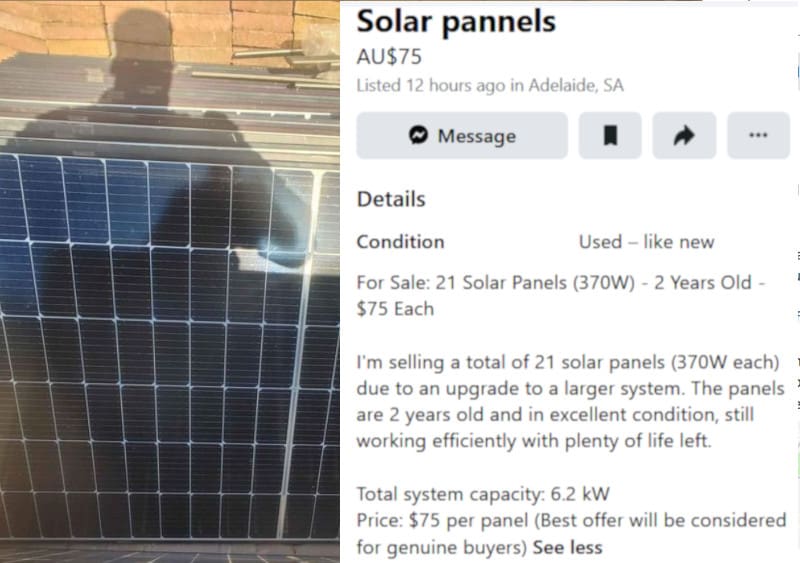
Half-cut or split cell panels only became common in the last few years. They have distinct advantages, so assuming they are a reputable brand, I would consider using them.
Off Grid Is Different
People who choose to live in the bushes find they can build a very useful solar array to charge batteries using old solar panels. Provided you use post-2013 panels with proper fire ratings and keep the system voltage below 50 volts DC, it’s technically legal to do it yourself.
Bear in mind that any decent system to run a modern house won’t use 12V or 24V nominal equipment, though.
It’s more common, more capable, and cheaper to use the default standard of 48V. The catch is that a 48V battery may need 58V during its charging cycle, which means setting it up and doing the wiring is licenced work. Not to mention the AS4509 rules for battery installations.
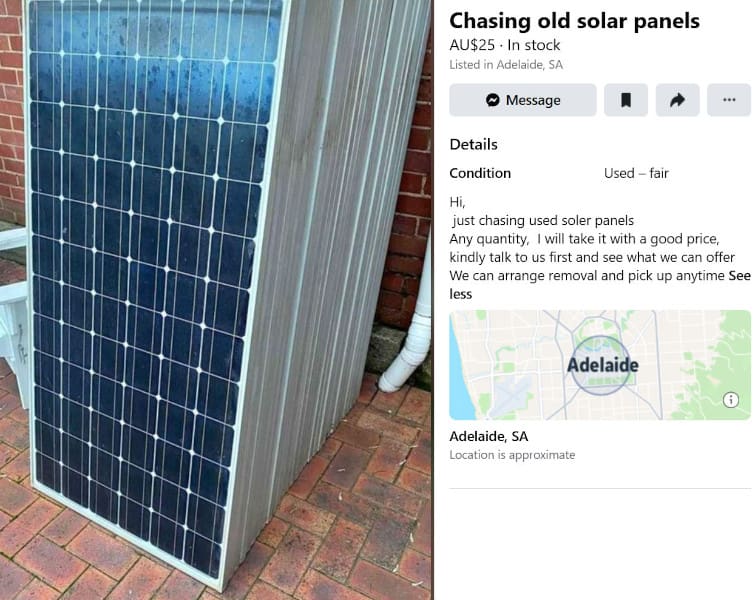
Thousand of old Australian solar panels end up going overseas thanks to the persistence of some active panel buyers.
Sending Old Panels Overseas
Thousands of Australian solar panels have been shipped to developing countries and onsold to charge small batteries and run solar pumps. It’s a good primary reuse of expensive technology and resources.
Some in the industry liken second-hand panel buyers to seagulls. Perhaps it’s unkind, but many are hands-on helpers who form a useful part of the new solar industry.
While trial programs are being run to learn about and establish a proper recycling protocol in Australia, it’s already well known that labour to test old panels and tag them electrically safe is expensive.
Additionally, the cost of packaging, handling, and freight quickly puts the value of used solar on par with new panels coming from the factory gate in China at 8c/watt.
Second-hand Solar Can’t Have A New Connection
Any newly connected system must adhere to the latest rules, or it won’t be granted network approval.
Not only does this include grid stability settings, but it increasingly means internet-connected inverters with remote curtailment, otherwise known as flexible exports and emergency backstop requirements.
Now, some inverters are retro compatible. We must give a big nod to Fronius here because 10 years of market-leading snap inverters will comply1 with new requirements simply by giving them a firmware update.
So the system pictured below probably isn’t bad value if you have a tame electrician to install it.
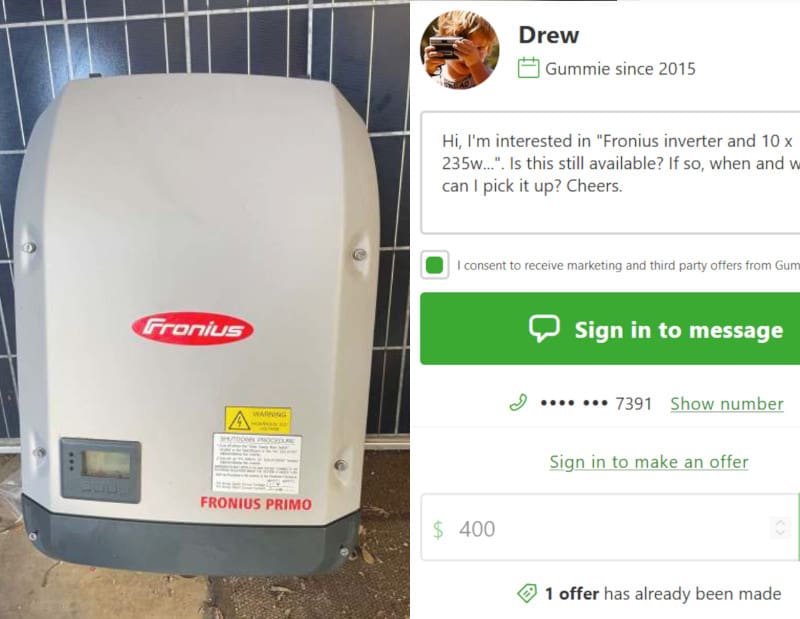
Fronius Snap inverters are well loved for a reason.
Take Home Message, Don’t Take Used Solar Home
Most solar installation work must be done by an electrician. As a licenced contractor and qualified roofer, I used to perform mechanical parts of the installation and assist the qualified electrical trades I employed. However, the requirements are more stringent now.
You need connection permission, network portal logins, certificates of compliance, and specialised tooling, so even non-solar sparkies often hand over to those who know the work best and have the training.
Don’t Try To DIY
If you bang some old junk on the roof and start ringing around for a sparky to do the final hookup, you’ll get no joy.
Those in the increasingly competitive solar industry simply aren’t interested in the reputational or licencing risk of signing off on a system that someone else installed… especially when the equipment is out of date and non-compliant.
Original Source: https://www.solarquotes.com.au/blog/second-hand-solar-dont-waste-time/

